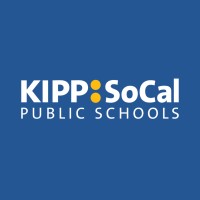
KIPP SoCal Public Schools
KIPP SoCal Public Schools is a nonprofit organization that operates 24 tuition-free, open-enrollment charter public schools, within 20 Local Education Agencies, educating more than 10,000 students and supporting 6,800 alumni to and through college. Together with families and communities, we create joyful, academically excellent schools that prepare students with the skills and confidence to pursue the paths they choose—college, career and beyond—so they can lead fulfilling lives and create a more just world. We believe the purpose of education is liberation, in cultivating a place and space where diverse identities are affirmed, voices are heard, and our students can envision what a just world is and feels like. We believe in a world where every child can grow up free to create the future they want for themselves and their community. Our whole-child approach to learning not only focuses on rigorous academics, but also character development, enrichment, social-emotional learning, physical and mental health, sense of identity, and the nurturing of one's purpose. Our award winning schools are part of the national KIPP (Knowledge Is Power Program) network, dedicated to meeting the needs of all learners and providing the social, emotional and academic support for success in high school, college, and life.






